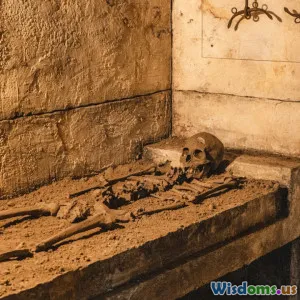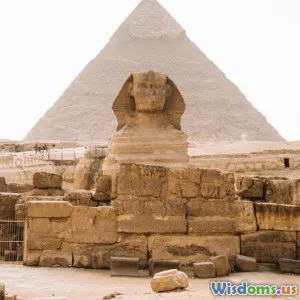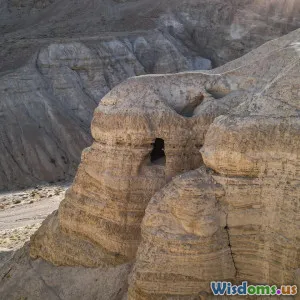
What Did the Vatican Really Know About Prehistoric Maps?
15 min read Exploring Vatican knowledge and perspectives on ancient prehistoric maps and their significance. (0 Reviews)
What Did the Vatican Really Know About Prehistoric Maps?
Picture ancient maps, mysterious parchments speckled with lands that may or may not have existed—how much did the Vatican, the timeless heart of Western Christendom, actually know about these enigmatic artifacts? The intersection of religious authority, arcane cartography, and history’s greatest mysteries kindles the imagination. Amid popular conspiracy theories and revelations from archives, the real story reveals a far more nuanced, and perhaps even more extraordinary, relationship between the Vatican and prehistoric maps.
The Vatican’s Ancient Archives: A Gateway to Hidden Cartographic History

Among the labyrinthine corridors of Vatican City lies the Vatican Apostolic Archive—a treasury famed for its secrecy and magnitude. Housing more than 85 kilometers of shelving, the Archive houses documents ranging from papal letters to medieval chronicles and, according to speculation, even forgotten maps.
Contrary to the image propagated by fiction such as Dan Brown’s novels, the Vatican was not exclusively a fortress of religious dogma but an unrivaled center of learning throughout the Middle Ages and Renaissance. As Christian missionaries, diplomats, and explorers returned from distant lands, they brought with them knowledge, artifacts, and sketches, many of which found their way into papal collections.
Secret Rooms or Open Scholarship?
The Vatican has periodic exhibitions of its more famous cartographic treasures, like the Ptolemaic maps—copies of the works of Claudius Ptolemy, the 2nd-century Greek geographer whose influence would shape worldviews for centuries. Though little evidence exists that the Vatican concealed knowledge of lost continents or ancient advanced civilizations as some theories contend, the Church did quietly accumulate and safeguard numerous early maps. As renowned historian John L. Heilbron recounts in "The Sun in the Church," the Vatican’s relationship to scientific knowledge has historically blended secrecy with surprising openness, depending on geopolitical context.
Fact: The famed Gallery of Maps inside the Vatican Museum, completed in 1583, displays forty panels depicting the diverse regions of Italy — testimony to the Vatican’s early embrace of cartographic artistry and scholarship.
Prehistoric Maps: What Are They and Was the Vatican Interested?

Before the Renaissance revival of scholarship, the concept of a prehistoric map was nebulous at best. Prehistoric maps typically refer to artifacts created before classical antiquity—think cave engravings, petroglyphs, and other symbolic representations that depict local territory, the heavens, or mythic geographies. Examples include the Bedolina Map of the Italian Alps (estimated 6th–4th century BCE) or the Çatalhöyük map mural in Anatolia (7th millennium BCE).
There is no direct documentation that the early or medieval Church acquired or preserved stirrings of such cartographic records. Yet, an enduring curiosity about origins and the shape of the world fueled Catholic explorers and thinkers. In official chronicles, letters, and treatises, references to the world’s roundness, possible unknown lands, and geographical mysteries surface again and again.
Did Papal Curiosity Lead to Acquisition?
Consider Cosmas Indicopleustes, a 6th-century Byzantine Christian monk whose spherical model of the Earth dares to defy modern assumptions about medieval ignorance. Though his surviving maps reached the West through monastic copying and commentary, there’s no public acknowledgment of relic sightseeing by popes. The Vatican's interest was largely theological: how did the world align with Genesis? How did Noah’s descendants repopulate distant lands? To answer these, they sought every scrap of ancient wisdom—some of which could plausibly have included fragments or descriptions of prehistoric maps.
Church Patronage and Renaissance Cartography

The Holy See claimed a pivotal place in the Age of Exploration, sponsoring expeditions and hosting scientific minds.
Maps as Manifest Destiny and Mission
When Columbus navigated for the "Indies," one of his sponsors was the powerful Spanish monarchs, with papal blessing. The Treaty of Tordesillas (1494), arbitrated by Pope Alexander VI, literally split the world outside Europe between Spain and Portugal. Thus, the Church not only viewed maps but drew the lines that shaped early modern geopolitics.
The Vatican maintained teams of top geographers and artists. Consider these contributions:
- Fra Mauro’s World Map (c. 1450): Commissioned by Venetian monks, it influenced Renaissance cartographers across Europe. Its design paralleled the Vatican's own ambitions.
- The Gallery of Maps (1580): Ordered by Pope Gregory XIII to showcase the extent of the Papal States and southern Italy, this monumental corridor hosts breathtaking, meticulously crafted frescoes—many based upon military reconnaissance, local wisdom, and Church records.
Interpreting the Prehistoric: How Scholars Read the Unknown
It’s conceivable that medieval sketched maps of mythical places—Atlantis, Eden, the antipodes—were sometimes inspired by more ancient data. While the Vatican itself did not admit to hoarding actual prehistoric artifacts, it did influence the very lenses through which such knowledge was preserved, interpreted, or suppressed.
Decoding Myths: Did the Vatican Suppress or Reveal Mysterious Maps?

Due to centuries of real (and imagined) secrecy, the Vatican is a focus for speculation about lost knowledge. Books and documentaries sometimes exaggerate, casting the Church as a gatekeeper of ancient extraterrestrial maps or as having plotted to quell heretical geography.
Separating Legend from Documented Reality
No publicly available document in Vatican archives demonstrates direct suppression of pre-Roman or pre-Christian maps. Scholars who have worked in the Archives, such as Vatican Library Prefect Monsignor Cesare Pasini, indicate that while treasures exist among the 1.6 million books and manuscripts, prehistoric maps are almost entirely absent. Most treasures are medieval or later, representing the products of thousands of years of European scholarship.
Relevant Example: When the "Vinland Map," supposedly charting Norse America, came to light in the 20th century, experts searched Vatican records for corroborations—none were found. Despite claims from alternative history writers, the Church made no efforts to hide objects like the highly-debated Piri Reis map (1513), which originated from Ottoman sources and, again, holds no conclusive ties to the Vatican.
Why the Myth Holds Sway
Still, the notion persists. Why? Because the Vatican’s undeniable treasure trove brims with the unexpected: documents that radically changed our understanding of European and world history—such as unknown correspondences from explorers, detailed ethnographies, or drawings retroactively recognized as groundbreaking. This fuels the belief, sometimes unjustified, that "unseen" wonders (even of prehistoric origin) are only an archivist’s dogged search away.
Ancient Cosmologies: Church Doctrine Versus Unknown Geographies

The real story is not of elaborate cover-up, but of interpretive tension. Until the Renaissance, the Vatican’s worldview was constructed more with scriptural topography than actual maps. Medieval mappaemundi—schematic world maps—placed Jerusalem at the center, grouped continents by Noah’s sons, or depicted the incomprehensible "Terra Australis Incognita."
A Clash of Stories
- Ebstorf Map (destroyed in 1943): This giant medieval map, copying earlier traditions, framed the known world within a Biblical narrative, depicting not only real landscapes but also mythical places and tribes said to live at the earth’s edges.
- Hereford Mappa Mundi: Presenting a Christian cosmology, it includes everything from biblical history to medieval "facts," showing a conceptual rather than empirical mapmaking tradition.
Maps based on indigenous traditions—such as the Bedolina petroglyph—were unknown to Vatican scholars until much later, and their symbolic systems were not compatible with Christian hermeneutics of space and time. The Church assumed the end of the known was the end of the possible.
Embracing the Unknown
During the Renaissance, thanks to missionaries in Asia, Africa, and the Americas, alternative cartographic views crept in. Matteo Ricci, a Jesuit in China (late 16th–early 17th centuries), produced maps combining Chinese and European geographic traditions. These documents found their way into papal collections and subtly expanded the boundaries of theological geography.
Modern Revelations: Vatican Collections and Archaeological Cooperation

The past century has seen painstaking Vatican–scholarly partnerships shining a light on what is—and is not—contained in its archives.
Increased Transparency
With globalization, researchers—including experts in prehistoric cartography, like Prof. Norman Thrower and Dr. Catherine Delano Smith—work alongside Vatican librarians to comb through records. Elements of maps, ancient guides, and geographical treatises have been catalogued and made accessible via digital repositories. Yet, no stone-age maps or Neolithic codices have been found in Vatican possession.
Example: The Vatican’s 15th-century copy of Ptolemy’s Geographia is now digitized for public study. World-renowned map historian Chet Van Duzer used such documents to analyze how the West envisioned distant lands—yet none represented knowledge older than the Greek-Roman world.
Collaboration With Universities
Archaeological institutions such as the University of Oxford and La Sapienza in Rome have been recently granted limited access to church-controlled manuscripts. Through such partnerships, details that lay hidden—like indigenous South American maps or North African itineraries written by missionaries—have come to light, but they all postdate the prehistoric era.
Lessons From the Vatican’s Cartographic Legacy

While the Vatican may not possess the elusive prehistoric maps of mythic reputation, its relationship with world cartography is rich with lessons.
Interpreting What We Find
The Church’s real legacy lies in its ability to interpret and transmit world knowledge, acting as a conservator during centuries of instability. By nurturing scriptoria, safeguarding fragile manuscripts, and eventually contributing lavishly to mapmaking during the Renaissance, the Vatican furnished our collective geographic imagination.
Ethical Stewardship and Mystique
Modern access remains contested, sometimes criticized as too cautious, but the past fifty years have undeniably advanced the cause of transparency, even as aura and legend linger. Scholars like Francis X. Blouin Jr. emphasize the ethical complications of making sacred or rare materials public—but also the profound impact when such treasures are unveiled to researchers worldwide.
The Enduring Allure of Unsolved Mysteries
For all the fiction surrounding the Vatican’s secret prehistoric maps, their ritual, secretive ambiance persists as a catalyst for speculation. It speaks to our universal desire to find lost knowledge and to reconcile the stories of our origins held in religious, symbolic, and geographic traditions. What history teaches us is that there’s almost always a more fascinating, nuanced truth than even the most elaborate legend can invent.
So while the Vatican may not have had prehistoric blueprints for lost worlds, its central role in mapping the known—a blend of faith, inquiry, and artistry—proves it has shaped humanity’s search for understanding, both of this world and, perhaps, worlds we can only imagine.
Rate the Post
User Reviews
Popular Posts


















